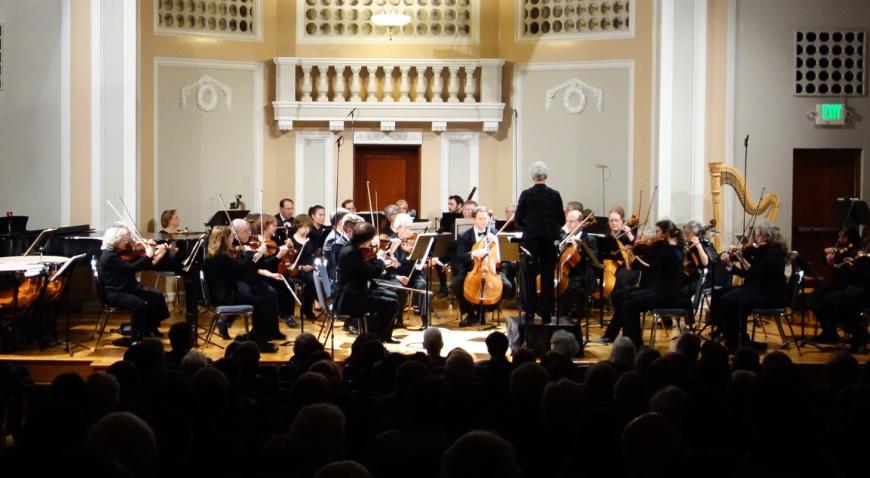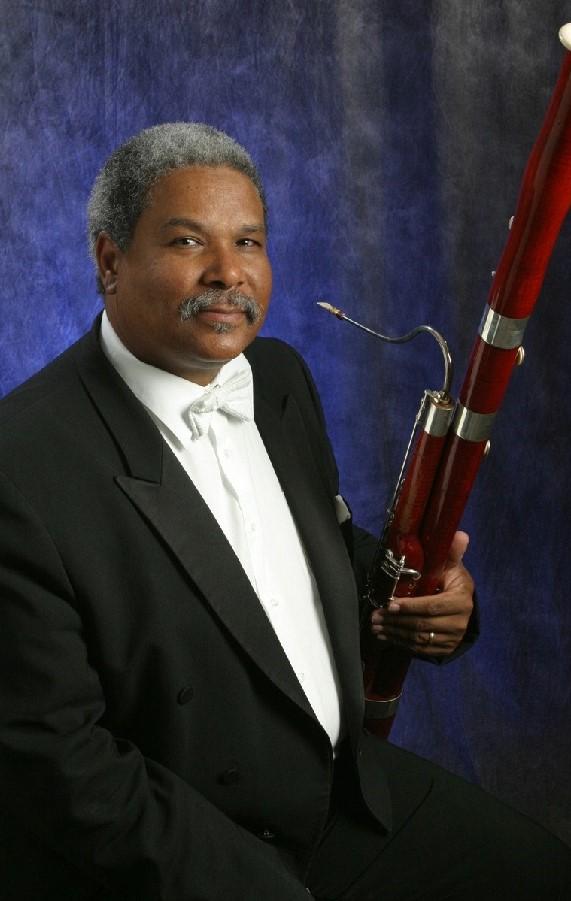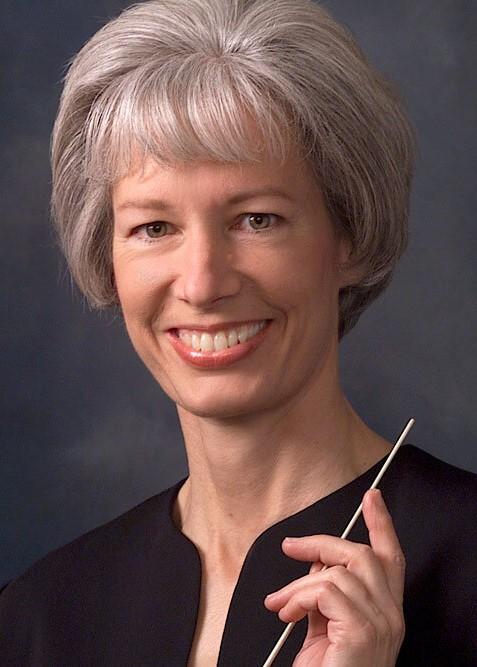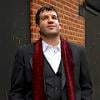
Emily Ray, founding music director of the Mission Chamber Orchestra of San Jose, is retiring after a 26-year tenure. Her last regular-season concert — there’s still the annual “Music of Portugal” program to come on June 4 — was held at the De Anza College Visual and Performing Arts Center in Cupertino on Saturday, April 15. This tidy little proscenium auditorium has much friendlier acoustics than the volunteer orchestra’s usual venue, the Hammer Theatre in San Jose. It’s small, but so was the nevertheless enthusiastic audience.
Attendees heard an unconventional program that a larger-scale ensemble would be unlikely to take up. In a lineup of substantial but unusual pieces, the longest work, at 33 minutes, was Ghost of the White Deer by Jerod Impichchaachaaha’ Tate, a contemporary composer of the Chickasaw Nation whose music has also been played locally by the Oakland Symphony and the San Francisco Symphony. His piece is a bassoon concerto in the form of a single-movement tone poem, depicting scenes and characters from a Chickasaw legend about a suitor who never returns from hunting a white deer, the difficult task his intended’s father set him.

Lacking a higher-tech way of conveying the sequence of scenes to the audience, the orchestra employed a man to sit at the front of the stage holding large white cards labeled with the section titles, which he would turn as appropriate. Such simple devices would be useful for a lot of picture-painting works and could be taken up by other groups not ashamed of being so openly communicative.
Tate’s music is lusty and vivid, in an intense tonal idiom. A purely percussive opening and much other percussive punctuation, including heavy bass drum thumps, convey a style listeners might associate with American Indian music. The mood varies tremendously. A section depicting the father’s laughter is grim and alarming, the toughest music in the piece.
The soloist was Rufus Olivier Jr., principal bassoonist with the San Francisco Opera and Ballet Orchestras. Tate required him to keep up a nearly unceasing line of trills, arpeggios, and staccato runs, which remained audible no matter what the orchestra was doing. Olivier handled these challenges with relaxed virtuosity, in a reclined posture, giving them a doubtlessly illusory air of effortlessness. When the piece was over, he underlined this mood by taking the bouquet of flowers he was offered and jauntily sticking it in the bell of his instrument, though it didn’t really fit.
To match the Tate work under the concert title of “Two Tales of Love and Bravery,” the orchestra offered Beethoven’s “Leonore” Overture No. 3. This is the most famous of the four overtures Beethoven wrote for the opera he eventually titled Fidelio, the tale of a woman who disguises herself as a man to rescue her husband from political imprisonment. With its offstage trumpet calls, the overture is always an effective piece.
The other older work on the program was the Symphonic Variations on an African Air by Samuel Coleridge-Taylor. This 22-minute piece is based on an African American melody, which gets thoroughly fragmented and mutated throughout the work. As with the Tate, the mood varies as the variations go by, from comic to romantic to dramatic to occasionally blustery, the last bearing a faint resemblance to the music of Edward Elgar.

The concert concluded with the compact 26-minute Symphony No. 1 by Peter Boyer. Boyer has been in the news lately for commissions connected to both the inauguration of Joe Biden and the coronation of King Charles III. His symphony has been heard here and there since being first played by the Pasadena Symphony 10 years ago. It’s an exceedingly tuneful, populist, and colorful piece in three movements: a slow prelude, a scherzo, and a slow movement/finale. Both the first and third movements are essentially monothematic, the first beginning with a fugato on its open-ended theme, the third building to a full-bodied climax.
Ray, who spoke before the piece, is not the first commentator to describe this symphony as sounding like movie music, a genre in which Boyer has much experience as an orchestrator. He dedicated his piece to the memory of Leonard Bernstein, but its bold and hearty sound is far more reminiscent of Elmer Bernstein, who unsurprisingly was Boyer’s orchestration teacher.
Here and in the other pieces on the program, the orchestra’s tuning and precision were often at fault. The wave of improvements in these aspects that has swept over other local volunteer ensembles in recent years has passed this group by. Where the orchestra did excel was in its response to Ray’s conducting. Her almost military approach on the podium kept the players’ timing firmly attached to the unusual 13-note rhythmic pattern in Boyer’s scherzo and gave full excitement to the climax of the finale. The more exotic sounds of Tate and Coleridge-Taylor were likewise well conveyed. It’s worth overlooking some imperfections to get such a rewarding concert experience.




